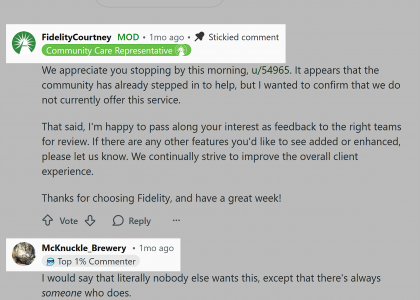Let’s face it: When it comes to analytics tools, we want it all. Advanced metrics, intuitive dashboards, and seamless integrations.
But we don’t always get what we want—especially as a Google Analytics 4 (GA4) user.
Many marketers default to Google Analytics because it’s free and popular. But those same marketers report issues like:
Steep learning curves
Lack of qualitative insights
Difficulty translating data into insights
Ready to make the switch?
We compared seven Google Analytics alternatives that provide quicker and more precise insights into your website’s performance.
Learn pros, cons, and pricing to make the right decision for your business.
What to Look for in a Google Analytics Alternative
What are your non-negotiables for an analytics tool? Consider these factors when evaluating Google Analytics 4 alternatives.
Ease of Use
GA4 has a complex interface with a steep learning curve. So much so, that even marketers familiar with Universal Analytics (its predecessor) have trouble setting it up correctly.
Look for a GA4 alternative that’s easy to navigate and lets you set up reports in minutes. This includes tools that set up tracking through a simple code snippet and automatically start collecting data.
Find a tool with built-in reporting templates to reduce setup time if needed.
Data Privacy Law Compliance
Privacy should be a top concern when choosing a new analytics tool, especially if you have a European audience or customer base. European laws require compliance with the General Data Protection Regulation (GDPR), a strict information privacy law.
While improved, Google Analytics 4 still collects user data, which raises privacy concerns. GA4 hides visitor data through IP anonymization, but still uses other identifiers like the client ID (CID) and user ID (UID) to track users.
Additionally, Google relies on the EU-U.S. Data Privacy Framework (DPF) to securely transfer and store data on its U.S.-based servers. But this framework does not provide completely anonymized data collection.
To comply with GDPR, customize your GA4 settings or opt for an alternative analytics tool with built-in privacy features to avoid compliance issues.
Customization Capabilities
If you want to track business-specific metrics, you’ll need advanced segmentation capabilities and filtered views.
The catch?
If the customization features aren’t user-friendly, you won’t be able to tailor them to your needs easily.
Look for built-in filters or segments you can apply with a single click so you don’t have to create them from scratch.
High Data Accuracy
Trustworthy data is vital to understanding your website or app’s performance.
For reliable data quality, opt for a tool that doesn’t rely on cookies or filters out traffic that includes cookie data.
With many people now using ad blockers and VPNs, it’s more complicated than ever for GA4 to collect accurate data.
This is especially true if you have a high-traffic website, as there are many data inconsistencies.
As a result, your traffic and conversion numbers might look lower than they really are. Even server-side tracking won’t solve this problem.
Performance and Reliability
Pick a platform that offers real-time data tracking for quicker decision-making. GA4 is known for slow page load times, complex tracking setups, and a lack of real-time data.
The free version also has excessive downtime and data inconsistencies.
Look for a platform that uses a live data stream at all times. This will avoid data inconsistencies or processing delays and allow you to build more accurate reports.
Integrations with Existing Tools
Have an existing tech stack? Make sure your analytics tool integrates with it. This helps you track the type of users that visit or interact with your website. It will also automatically pull that data into other tools you’re using.
While GA4 integrates well with Google products, it doesn’t offer native integrations with other tools in the market. You’ll have to rely on integrations offered by your current providers instead.
Top 7 Alternatives to Google Analytics at a Glance
Alternative
Standout Feature
Pricing
Matomo Analytics
An on-premise option for data hosting
$26 per month for up to 50,000 hits
Plausible
Filters spam domains and highlights traffic from Android apps
$9+ per month
Clicky
Alert monitoring system for website uptime and conversion events
Free plan available; $9.99+ per month for paid plans
Heap
Journey mapping and Lookback Analysis for long-term data analysis
Public pricing unavailable
Amplitude
AI-based predictive recommendation engine
Free plan available; $61+ per month for paid plans
Adobe Analytics
Customizable attribution models for different business needs
Public pricing unavailable
Fathom Analytics
IP and country blocking features for compliance/ease of use
$15+ per month
Semrush
AI Copilot for personalized recommendations
Free plan available; $139.99+ per month for paid plans
1. Matomo Analytics
Matomo Analytics is an open-source alternative to GA.
One of its standout features is intranet analytics, which lets you measure the performance and engagement of internal websites. Including traffic sources, visitor paths, and most visited pages.
It’s a great option if you’d like data on internal memos and the content your employees engage with the most.
The platform has no restrictions on data storage or the number of websites, users, or segments you can track. This gives you free rein over the properties you analyze.
How Matomo Compares to Google Analytics
Unlike Google Analytics, Matomo gives you complete ownership over your data. It’s not shared or stored with third-party services.
Matomo is also one of the only tools that offers an on-premise option for data-sensitive businesses. This lets you host your data in a secure data center or physical device that you own so your data is protected.
Matomo also gives you easy access to qualitative and user interaction data.
Say you want to understand how users interact with specific content assets. First, use the Media Analytics feature to review audio and video engagement data. Like unique visitors or total play time.
Then, use that data to decide which content resonates best with your audience.
You can also access keyword ranking data from Google and Bing within Matomo to monitor your SEO performance.
For instance, learn which keywords you rank for and how many clicks and impressions your website gets from them.
Pros and Cons
Pros
Cons
Self-hosted option available for data-sensitive organizations
User interface may show different data than the database because it uses fingerprinting technology (IP, devices, etc.) to identify users
Offers in-depth analytics features like Form Analytics and unsampled data reports
Not easy to customize dashboards, as the data doesn’t always populate based on the combination of dimensions you use
Access to 120+ integrations from the open-source community
Installation for the self-hosted option is tricky, as you need to configure it yourself, and the data doesn’t always transfer completely
Pricing
On-premise: Free to use. Some products, like Activity Log ($29+) and Media Analytics ($189+), are priced separately.
Cloud: $26 per month for most features. Some exceptions include SEO Vitals and Crash Analytics.
Further reading: 41 Best SEO Tools (Free & Paid)
2. Plausible
Plausible is a lightweight, privacy-focused GA alternative. Just add a script that’s less than 1 KB in size to drastically reduce page load times.
According to the company, its analytics script is more than 75 times smaller than GA’s.
In fact, an X user claimed that once they removed GA from their website and switched to Plausible, the website’s Core Web Vitals report jumped from 70 (needs improvement) to 96 (good):
Like Matomo, it’s an open-source alternative. But Plausible is geared toward non-technical users. It’s easy to use, and you can access website performance insights within the dashboard immediately.
Track metrics like unique visitors, total visits, total pageviews, and more in a single dashboard. The beauty of the software is you don’t have to waste time setting up basic reports related to your website’s performance.
For instance, you can plug in Google Search Console and Plausible will populate the data into the dashboard.
How Plausible Compares to Google Analytics
The biggest distinction is that Plausible is one of the few tools that truly does not collect cookies or personal data.
As a result, you’re automatically compliant with regulations like:
General Data Protection Regulation
California Consumer Privacy Act (CCPA)
Privacy and Electronic Communications Regulations (PECR)
Since you’re not collecting personal data, you don’t have to display cookie consent banners. This helps you offer a better user experience.
Ad blockers tend to use cookie-based scripts to identify which apps to block. Plausible doesn’t use these scripts, so you can measure visitor engagement without interruption.
Even if your analytics tool does get blocked, you can use a proxy script to override the blocker.
Unlike GA, Plausible can filter spam domains and uncover traffic from Android apps. Such features improve data accuracy, allowing you to trust the data stream.
Need to set up tracking for ecommerce reporting or custom events? All it takes is a few clicks to customize it to your needs.
This allows you to measure the performance of specific landing pages, ecommerce product pages, and user paths without the hassle of creating custom reports for each page and category.
Pros and Cons
Pros
Cons
Easy to navigate the dashboard
Software may be too basic for intermediate or advanced users who need advanced segmentations or detailed behavior analysis reports
Plausible’s lightweight script doesn’t impact site’s performance
Risk of account blockage if you pay for an annual plan and site visits increase
View all metrics on the same page (unlike other tools)
No qualitative tools like heatmaps or session recordings to see on-page user behavior
Pricing
Pricing depends on page views per month.
Growth: $9 per month
Business: $19 per month
Enterprise: Custom pricing
3. Clicky
Used by over 1 million websites, Clicky is an alternative to Google Analytics that focuses on security. It’s one of the few tools that lets you log data like IP addresses for anti-fraud purposes.
Unlike Plausible and GA, it offers qualitative insights using heatmaps and session recordings. These insights are categorized based on page, visitors, or segments, letting you drill down into your data.
This way, you can layer these insights and get a comprehensive overview of how users interact with your website.
Plus, the platform has a web and mobile version for easy access no matter where you are.
How Clicky Compares to Google Analytics
Google Analytics has delayed data, while Clicky gives you a live view of individual visitors and real-time analytics. Helping you make more informed decisions based on accurate data.
Clicky differentiates itself through its alert monitoring system that lets you track:
Website uptime rates
Specific conversion events
Visits from specific user segments
This is useful if you don’t want to spend time monitoring data and would prefer customized alerts for important events.
Even though Clicky doesn’t track cookies, you can still access Path Analysis reports to see how visitors move through your website.
GA also shows you that but uses cookies to do so—so you’ll have to create your own workarounds to comply with privacy regulations.
As opposed to GA, Clicky also offers data on user searches on your website. This data will help you understand your audience’s questions and expectations regarding your website.
Pros and Cons
Pros
Cons
Very easy to set up and start collecting data compared to GA
Outdated user interface compared to competing tools which makes it less intuitive to use
Clicky’s Spy feature provides a clear idea of visitor sources for top-performing channel analysis
Limited integrations with other marketing analytics tools, which could affect analysis capabilities
Doesn’t slow down your website’s performance due to a lightweight script
Pricing can get expensive as traffic increases
Pricing
Free: For up to 3,000 daily page views
Pro: $9.99 per month
Pro Plus: $14.99 per month
Pro Platinum: $19.99 per month
Custom: Contact for pricing
4. Heap
Unlike the GA alternatives we’ve discussed above, Heap is tailored to product and data teams.
This means you get a more holistic view of your site’s analytics. Including your customer’s entire digital experience—spanning multiple touchpoints like your website, product, or mobile app.
This is a great option if you’re relatively new to measuring performance or have difficulty setting up analytics. The dashboard includes relevant metrics with real-time data, helping you get insights faster.
How Heap Compares to Google Analytics
A key distinction between GA and Heap is that the latter measures product analytics, too. For example, if you want to see how users engage with your app, you can do so with Heap. This is not possible with GA.
Like Plausible, it captures all user interactions automatically using a single JavaScript snippet—without the need for manual tracking setup. All you have to do is add the snippet to your website/product and you’ll receive insights almost immediately.
The product also caters to non-technical users with an artificial intelligence (AI) copilot that lets you interact with your data using simple language.
For example, you can ask the AI Copilot how many users from a specific region complete conversion events on your website. And get an instant answer.
The product also lets you create visual maps of user flows, called Journey Mapping, for detailed analysis. This feature is available out of the box, so you don’t have to start from scratch.
If improving the entire customer journey is a priority for you, use Heap Illuminate to uncover friction points like abandoned carts or incomplete conversion events.
Let’s say you notice most users drop off before clicking a form’s “Submit” button. Use the Top Events table to analyze why they aren’t clicking. Maybe the button doesn’t work, or the form is too long.
Use that data to optimize the journey and turn friction into conversions.
The Lookback Analysis feature allows for retroactive data analysis by capturing missed events. So, even if you haven’t set up “events,” you can still get historical data and analyze it.
Pros and Cons
Pros
Cons
Access to granular analytics for web and product data, which gives you the full picture of the user journey
Users report that paid plans are prohibitively expensive
Useful for technical and non-technical users, as it offers a balance of ease of use and advanced features
Tracks an extensive amount of data, making it hard to find the right event data
Ability to visually label data from the livestream, reducing dependency on data teams for analysis
Steep learning curve for beginners
Pricing
Heap offers a free plan for basic measurement and three paid tiers (Growth, Pro, and Premier) for users who need long-term data and advanced analytics.
Pricing is available upon request.
5. Amplitude
Amplitude lets you measure performance in three places: your website, product, and data warehouse.
It connects data across different sources and helps you understand how visitors and users interact with your brand.
Amplitude also offers a customer data platform (CDP) that lets you monitor and manage data in one place. As a result, it improves data quality and your ability to deliver targeted experiences to users.
Let’s say you want to offer a specific version of your landing pages to users who visit from Facebook. You can rely on Amplitude’s native segmentation for this task.
How Amplitude Compares to Google Analytics
Amplitude includes built-in experimentation tools for A/B testing and feature management. You won’t need anything else to test specific landing pages or features. But GA requires integration with other tools like Google Optimize.
The platform also offers a guided experience to build experiments, so you’re not jumping in without help. That’s not the case with GA, which can get complicated quickly.
Amplitude’s AI features are advanced compared to those offered by GA and Heap.
Here’s what you can do with it:
Interact with your data using a chat-based interface
Clean up data automatically using AI
Receive alerts for a fall in critical metrics
Get predictions and recommendations about user actions
GA requires more manual setup and analysis and its predictive recommendations are less robust.
With Amplitude, everything’s already baked in.
Take advantage of Amplitude’s self-service capabilities and generate reports with a few clicks. But if you want to achieve that for advanced queries in GA4, you have to send data to BigQuery, which requires SQL skills.
Pros and Cons
Pros
Cons
Create dashboards easily for various purposes like feature experimentation or improving app performance
Some users report inconsistent data streams, which reduces reliability
No need for in-depth analytics or product knowledge (beginner-friendly)
Limited capabilities for customization based on formulas and layouts
Ability to integrate with 140+ data and marketing tools
App experience can be slow for large datasets, impacting further analysis
Pricing
Free: Access to foundational product and website analytics
Plus: Starts from $61 per month
Growth: Contact for pricing
Note: If you’re an early-stage startup with less than $5 million in funding, you can get access to the Growth plan for free for a year.
6. Adobe Analytics
Adobe Analytics mostly caters to mid-market or enterprise companies with complex customer journeys. Its cross-channel integrations let you capture data from multiple digital channels for holistic insights.
Adobe also has a massive product ecosystem. For example, you can integrate with Adobe Target, their website optimization tool, for unified analytics and personalization.
How Adobe Analytics Compares to Google Analytics
Adobe offers extensive customization options for reports and dashboards, while Google Analytics provides more standardized reports (which take time to learn and set up).
For instance, you get complex segmentation and granular user analysis capabilities with Segment IQ.
Pull any segment into the dashboard and immediately get a detailed report showing the statistically significant differences between these two audiences and any overlaps.
This way, you get more control over the analysis process and can create custom reports for internal reporting.
The product also focuses on attribution and offers multiple customizable modeling options. With GA4, you get four fixed models, limiting the scope of your analysis.
Adobe wins when it comes to data retention. It offers a standard 25-month policy that you can extend or shorten based on your company’s policies.
On the other hand, GA4 offers a 14-month data retention window on the free plan and a maximum of 50 months on the paid tier (Analytics 360).
Pros and Cons
Pros
Cons
Offers great collaboration features like mobile scorecards for teams, which helps you share top-level metrics with executives or non-technical users
Difference in measurement methods could lead to reporting inconsistencies
Excellent multichannel attribution capabilities where it collates data from different channels and uses machine learning to tell you which channels perform best
Steep learning curve for beginners due to excessive features
Analytics depth is better compared to competing tools, as you can create advanced analysis reports like ad-hoc analysis and cohort analysis
Too expensive for most smaller teams—and they’re mostly focused on mid-market/enterprise customers
Pricing
Adobe Analytics offers three paid tiers: Select, Prime, and Ultimate, and an Analytics add-on for features like Live Stream and Customer Journey Analytics.
Contact the company for a quote.
Further reading: 33 Top Digital Marketing Tools for Every Budget
7. Fathom Analytics
Fathom Analytics is one of the easiest-to-use analytics tools out there. Its simple dashboard provides high-level insights.
And you can set it up with a one-line script that’s less than 2 KB.
You get real-time data that results in instant analytics. And it filters out bots, crawlers, and distributed denial of service (DDoS) attacks. So, your data accurately reflects the real humans visiting your website.
Since it doesn’t use cookies, you’re not really spying on your visitors, either. The data is aggregated, so you can’t get specifics about their location or identity.
How Fathom Analytics Compares to Google Analytics
Fathom offers a transparent data processing policy that guarantees complete ownership over your data. GA4 shares your data with third-party providers within its ecosystem, and there’s no workaround for this process.
Fathom allows you to block specific IP addresses or countries. Users can still load the website from those locations, but Fathom won’t track or store that data. Unlike in GA4, where you can only filter it out in the final report.
Note: EU user addresses are blocked by default, so you don’t have to worry about complying with GDPR.
Additionally, Fathom enables one-click export for the reports you create. This makes it much easier to get raw datasets and perform further analysis if needed.
In GA4, that’s a multistep process that could break depending on traffic levels.
Pros and Cons
Pros
Cons
No learning curve required because it populates the data into a pre-built dashboard
Limited features compared to competing tools since it’s meant only for basic performance analysis
Legally complies with GDPR, CCPA, and PECR
You can’t migrate events using Fathom, so you’ll have to set up conversion events again
Stores data forever
Needs more filtering capabilities and granular datasets if you need to create more advanced reports like ecommerce funnel analysis
Pricing
Fathom offers a free trial and a tiered pricing policy.
The subscription starts at $15 per month for up to 100,000 data points. As your data points increase, so does the cost. For example, you can track up to 25,000,000 data points for $470 per month.
Bonus: Semrush
Semrush provides a detailed view of analytics. But it doesn’t stop at measuring internal metrics like monthly traffic and engagement time.
It also lets you see how your website performs on search engines and identifies technical issues and backlink opportunities.
Unlike GA, you don’t have to waste time setting up 15 different reports to access these insights. Enable them within your dashboards, integrate your accounts, and get started.
For example, BetterVet, an in-home pet service provider, increased organic traffic by 2,002% using Semrush to analyze and improve performance in multiple areas. Including technical health, keyword performance, and backlink-building.
Within a year, they had over 6,000 keywords in the top three positions and an 88% increase in organic leads per week.
Take advantage of tools like:
Traffic Analytics: Find out how your competitors’ websites are performing in terms of traffic volume and audience distribution
Organic Traffic Insights: Combine Google Analytics, Google Search Console, and Semrush data and view metrics like click-through-rates (CTR), keyword rankings, and keyword volume data
Position Tracking: Learn how many keywords your website ranks for and their respective positions on the SERPs
Backlink Analytics: Analyze your website’s backlink profile and identify opportunities to get more backlinks
How Semrush Compares to Google Analytics
Semrush can analyze competitor keywords, backlinks, and traffic data—giving you a robust overview of your company’s performance. But GA4 can’t compare your website’s performance with other websites.
Semrush lets you benchmark yourself against competitors and get a realistic overview of performance gaps.
It also combines data from multiple sources, such as GA4 and Google Search Console, to provide a clear overview of traffic sources, trends, and audiences.
Let’s say you want to see which keywords are contributing to high traffic numbers on specific blog posts.
Typically, you’d have to filter those pages in Search Console, but you can’t see which audience segments visit these pages.
With Semrush, you get an in-depth look into your audience’s demographics and socioeconomics.
Not a technical user? Semrush’s Copilot, an AI-based SEO assistant, analyzes your data and provides critical insights and recommendations.
Lost keyword ground
Technical SEO issues
Untapped keyword opportunities
Potentially damaging backlinks
Site gaps compared to competitors
For instance, if your site’s health falls, Copilot alerts you to technical issues like 4xx errors and broken internal links. And recommends fixes.
Pros and Cons
Pros
Cons
Robust analytics capabilities for internal and external performance measurement
Analytics capabilities like Semrush Trends require an additional fee—driving up costs
Competitive analysis tools
Some users report a data stream delay of up to two weeks
Review all SEO metrics from GA and Google Search Console data within the platform
Overwhelming to use at first due to an extensive feature set
Access performance insights for other channels like social media
Pricing
Semrush offers a free plan with limited analytics access.
It also has three paid tiers:
Pro: $139.99 monthly
Guru: $249.95 monthly
Business: $499.95 monthly
Note: A free Semrush account gives you up to 10 credits per day with this tool. Or you can use this link to access a 14-day trial on a Semrush Pro subscription.
Choose the Right Google Analytics Alternative Based on Your Needs
Selecting the right Google Analytics alternative for your requirements will depend on various factors, including:
Budget constraints
Technical constraints
Specific use cases
Compliance requirements
In either case, any of these tools can help you overcome the challenges you face with Google Analytics.
Think of it this way: You’re not just replacing GA—you’re looking for a tool that’ll help you make reliable, data-backed decisions.
Interested in a platform that monitors website, SEO and content-related metrics? Check out our detailed review of Semrush.
The post 7 Top Google Analytics Alternatives (Free and Paid) appeared first on Backlinko.






